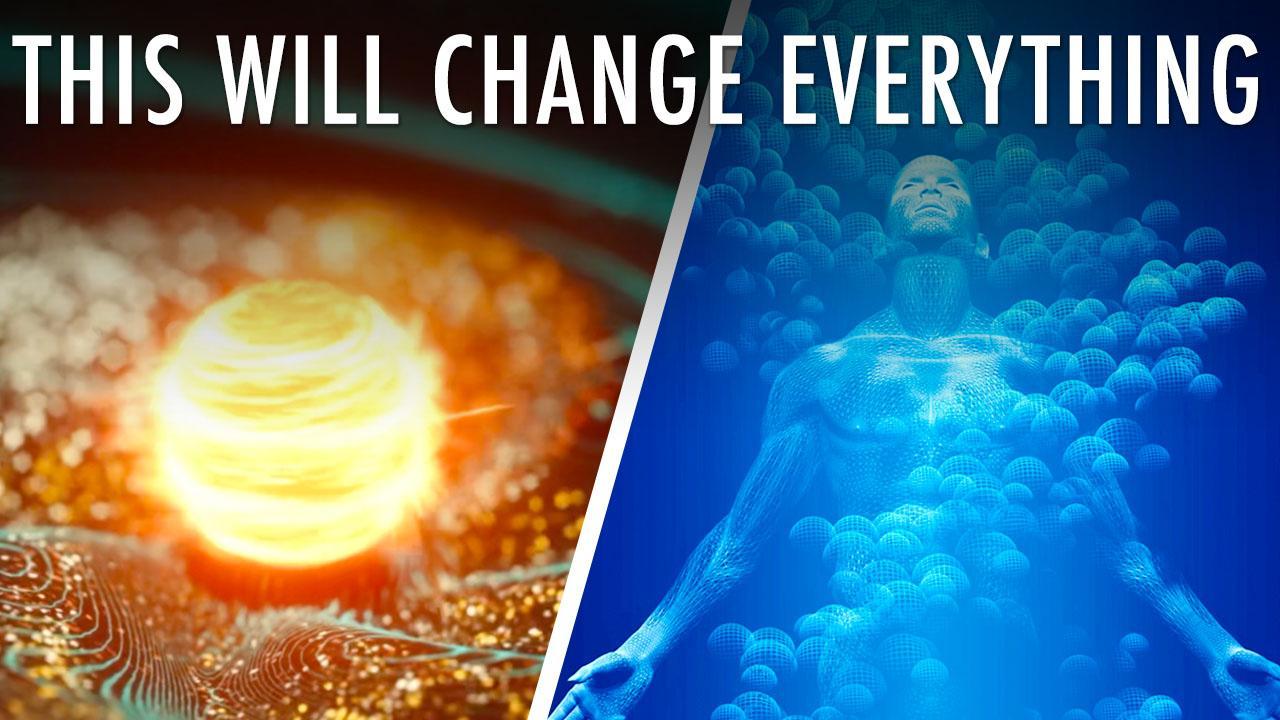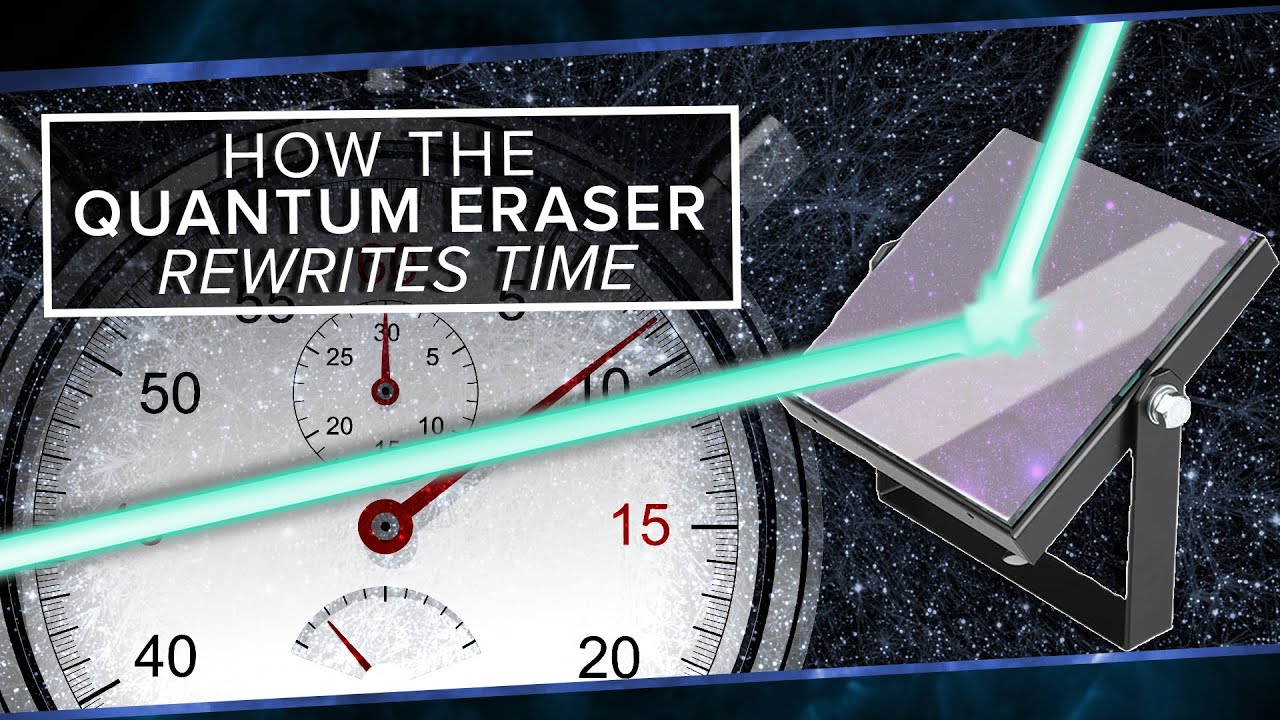Quantum physics has shattered our understanding of reality, revealing a universe far stranger than science fiction. From particles that teleport to cats that are simultaneously alive and dead, these discoveries have rewritten the rules of existence.
Here are the 10 most mind-blowing quantum breakthroughs that transformed physics—and our perception of reality itself.
1. Quantum Superposition (Schrödinger’s Cat) 🐱📦
Schrödinger’s famous thought experiment demonstrated that quantum systems can exist in multiple states simultaneously—like his hypothetical cat being both alive and dead—until measured. This isn’t just theoretical; quantum computers now harness superposition by processing information as qubits that maintain all possible values at once. Superposition forms the foundation of quantum computing and reveals that at microscopic scales, particles don’t follow classical either/or logic but exist in ghostly probabilistic states.
The philosophical implications are staggering—reality may not be fixed until observed, suggesting the universe fundamentally exists as a web of possibilities. This challenges our basic notions of existence and shows that the quantum world operates by entirely different rules than our macroscopic experience. From enabling quantum encryption to redefining measurement theory, superposition continues to revolutionize both technology and our understanding of reality’s fabric.
2. Quantum Entanglement (Spooky Action) 👻🔗
Einstein famously dismissed entanglement as “spooky action at distance,” unable to accept that particles could instantly influence each other regardless of separation. Yet countless experiments have confirmed this phenomenon, where measuring one entangled particle immediately determines its partner’s state—even if light-years apart. This violates classical intuition about locality and suggests the universe has a deeply interconnected quantum substrate we’re only beginning to understand.
Entanglement isn’t just a laboratory curiosity—it’s the foundation for emerging quantum networks and unhackable quantum cryptography. Scientists have already used it to “teleport” quantum information between photons across cities and even into space. Future quantum internet systems may harness entanglement for perfectly secure global communication, while physicists continue probing whether this phenomenon hints at even deeper truths about space-time’s fundamental nature.
3. The Double-Slit Experiment (Wave-Particle Duality) 🌊🔦
This deceptively simple experiment, where particles like electrons create interference patterns like waves, revealed one of quantum mechanics’ deepest mysteries: particles behave differently when observed. The mere act of measurement collapses their wavefunction, forcing them to “choose” particle-like behavior—suggesting consciousness plays an active role in shaping reality. This wave-particle duality forms the core of quantum theory and demonstrates that at fundamental scales, matter exists as probability waves.
The implications ripple through philosophy and physics alike, challenging the classical view of an objective reality independent of observation. Modern variations of this experiment continue to yield surprises, including recent demonstrations that the quantum realm may not follow conventional notions of cause and effect. This phenomenon isn’t just theoretical—it’s harnessed in electron microscopes and underpins technologies from semiconductors to quantum imaging systems that see around corners.
4. Quantum Tunneling (Walking Through Walls) 🚪💨
Quantum tunneling allows particles to penetrate seemingly impenetrable barriers, a phenomenon with no classical analog. This isn’t just theoretical—it explains how stars fuse hydrogen (overcoming electromagnetic repulsion) and enables flash memory chips in your devices. At the quantum scale, particles can momentarily “borrow” energy to appear on the other side of barriers, behaving more like waves than solid objects.
This counterintuitive effect powers many modern technologies, from tunnel diodes in electronics to scanning tunneling microscopes that image individual atoms. Future applications could include ultra-efficient solar cells that harness tunneling for better energy conversion, and quantum sensors capable of detecting unimaginably small forces. Tunneling demonstrates that in the quantum realm, the impossible becomes probable—changing how we understand interactions at the most fundamental level.
5. The Uncertainty Principle (Heisenberg’s Limit) 🎯🌀
Heisenberg’s revolutionary principle states we cannot simultaneously know certain particle properties (like position and momentum) with perfect precision—not due to measurement flaws, but as a fundamental feature of reality. This isn’t just a technological limitation; it reveals the universe has built-in limits to knowledge, operating on probabilities rather than certainties. The more precisely we pin down one quantum property, the more uncertain its complementary property becomes.
This principle has profound implications for quantum computing, where it necessitates error correction techniques, and for our philosophical understanding of reality’s fabric. It suggests the universe isn’t just complex—it’s fundamentally indeterminate at its core. Modern applications range from ultra-precise atomic clocks to techniques that overcome the diffraction limit in microscopy, allowing scientists to see beyond what classical physics said was possible.
6. Quantum Computing (Qubits) 💻✨
Quantum computers harness superposition and entanglement to perform calculations impossible for classical machines. Unlike binary bits, qubits can represent 0, 1, or any probabilistic combination simultaneously—allowing exponential scaling of processing power. Google’s 53-qubit Sycamore processor demonstrated this by solving in minutes what would take supercomputers millennia, achieving “quantum supremacy” and proving the technology’s transformative potential.
The quantum computing revolution promises breakthroughs in materials science, drug discovery, and AI optimization by simulating quantum systems directly. While challenges like quantum decoherence remain, companies and governments worldwide are racing to build practical quantum machines. This isn’t just faster computing—it’s an entirely new paradigm that may solve problems we haven’t yet imagined while forcing us to reconsider the nature of information itself.
7. Quantum Teleportation (Beam Me Up) 🚀🌀
Scientists have successfully teleported quantum states between particles over 1,400 km via satellite—not Star Trek-style matter transport, but the instantaneous transfer of quantum information between entangled particles. This works by exploiting entanglement to recreate a quantum state elsewhere while destroying the original, a process fundamental to future quantum networks. While we can’t teleport objects (yet), the implications are staggering for secure communication and quantum computing.
This phenomenon could lead to a quantum internet where information transfers with perfect security, protected by the laws of physics themselves. Recent experiments have teleported quantum states between different physical systems (like light and matter), suggesting future networks might seamlessly connect diverse quantum technologies. Each breakthrough brings us closer to harnessing nonlocality—one of quantum physics’ most mysterious features—for practical applications.
8. The Quantum Zeno Effect (Frozen Time) ⏳❄️
This counterintuitive phenomenon shows that frequently observing an unstable quantum system can prevent its decay—like watching a pot to stop it from boiling. Named after Zeno’s ancient paradox about motion being impossible, this effect demonstrates how measurement actively shapes quantum reality rather than passively observing it. Scientists have used this to dramatically slow chemical reactions and may eventually apply it to stabilize quantum computers.
The implications challenge our notions of time and change at quantum scales. Recent experiments have extended observation periods to macroscopic timeframes, suggesting this isn’t just a microscopic curiosity. Potential applications include new methods for preserving quantum information and controlling chemical processes with unprecedented precision—essentially using observation as a tool to manipulate quantum reality.
9. Hawking Radiation (Black Holes Glow) ⚫✨
Hawking’s revolutionary theory showed black holes aren’t completely black but emit quantum radiation at their boundaries, slowly evaporating over eons. This stunning prediction merges quantum mechanics with general relativity, suggesting even spacetime’s most extreme phenomena obey quantum rules. While not yet directly observed, Hawking radiation resolves the black hole information paradox and suggests these cosmic monsters have temperatures—a concept that transformed theoretical physics.
This discovery hints at a deeper connection between gravity and quantum theory, possibly pointing toward the long-sought theory of quantum gravity. Recent analog experiments using sound waves and other quantum systems have provided supporting evidence, while physicists continue searching for ways to detect this elusive radiation directly. Hawking’s insight remains one of the most profound bridges between quantum mechanics and cosmology.
10. The Holographic Principle (2D Reality) 🖼️🌌
This radical theory suggests all 3D information in our universe might be encoded on a 2D surface at the cosmic horizon—meaning we could be living in a giant hologram. Initially proposed to solve black hole information puzzles, the holographic principle has grown into a serious framework suggesting spacetime itself emerges from quantum information. If true, it would mean reality as we experience it is a projection from a deeper, lower-dimensional reality.
While still speculative, this idea has gained traction through the AdS/CFT correspondence in string theory and continues to inspire new approaches to quantum gravity. Recent experiments with quantum systems have found evidence supporting holographic behavior, suggesting this might be more than mathematical elegance. The principle could revolutionize our understanding of space, time, and information—potentially revealing that the universe operates more like a quantum computer than a classical machine.
Final Thoughts 🌠🔮
These quantum breakthroughs reveal a universe far stranger than classical physics ever imagined—one where observation creates reality, information transcends space, and the fabric of existence may be woven from probability rather than certainty. Each discovery not only solves old mysteries but unveils deeper questions about reality’s fundamental nature.
As quantum technologies mature—from computers to sensors to communication networks—we’re not just building new tools but learning to speak the universe’s native quantum language. The coming decades may reveal whether these phenomena are mere surface features or clues to a grander cosmic structure waiting to be discovered.



